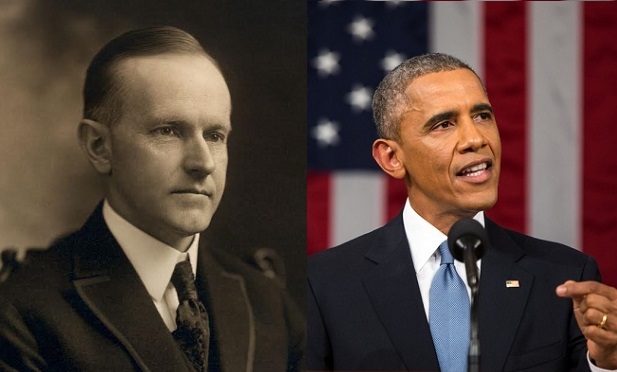Calvin Coolidge was the last American President to visit Cuba while still in office — in 1928. Coolidge wasn’t just trying to escape Prohibition, then in full force in the United States. Silent Cal was himself a teetotaler and wouldn’t even sip a Cuban rum, preferring a cranberry juice and soda. (When President Obama visits in March, he is far more likely to display his cordiality by raising a locally made glass.) Coolidge met with Cuban President Gerardo Machado, and gave a speech at the Sixth Annual Pan-American Conference in Havana. (Pan-Americanism — a stay against all further European colonialism in the Americas — grew out of the Monroe Doctrine.)
Coolidge didn’t fly to Cuba on Air Force One either, of course. The president took a train to Key West and then sailed on a US battleship to the island, just 100 miles off the American coastline. Coolidge’s ship was greeted enthusiastically by crowds of Cubans. And his speech was also well-received, given the US’s role as chief regional enforcer against encroachment by Europe and others. Mr. Obama will surely not praise the accomplishments of Christopher Columbus, as Coolidge did. But Obama will without doubt echo Coolidge’s beliefs when, in his 1928 Cuba speech, Coolidge said this: “It is not desirable that we should attempt to be all alike. Progress is not secured through uniformity and similarity but rather through multiplicity and diversity. We should all be intent on maintaining our own institutions and customs, preserving the purity of our own language and literature, fostering the ideals of our own culture and society.” And Obama may echo this Coolidge line, too: “If you are to approximate your past successes, it will be because you do not hesitate to meet facts squarely.”
